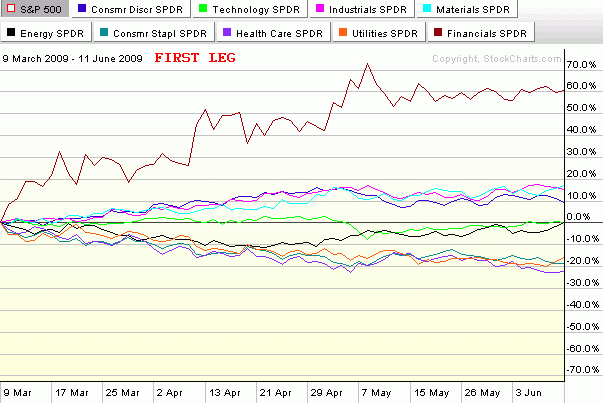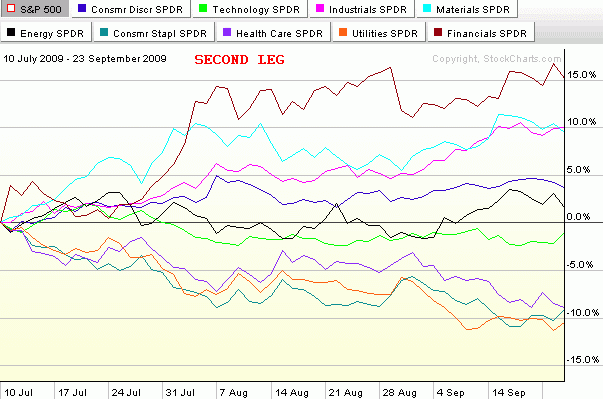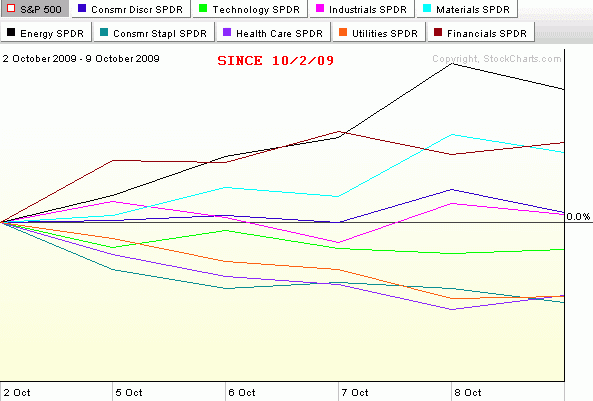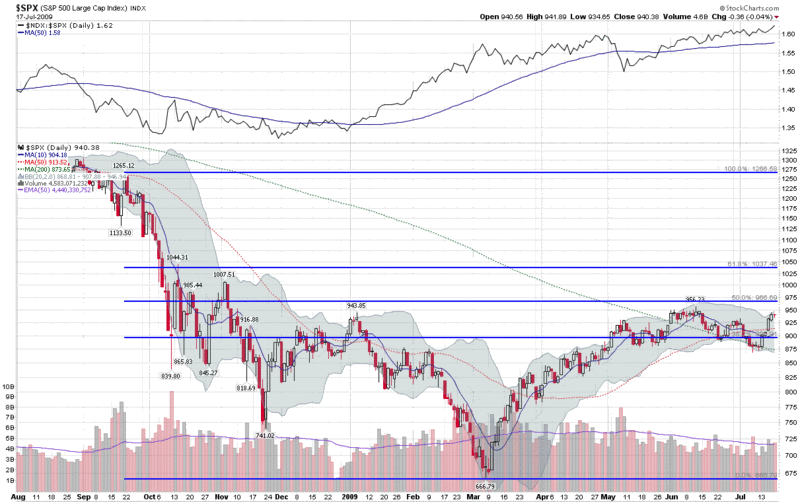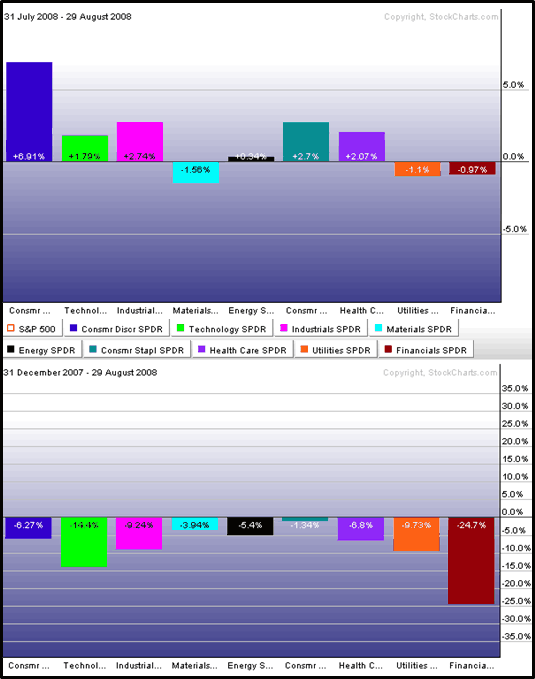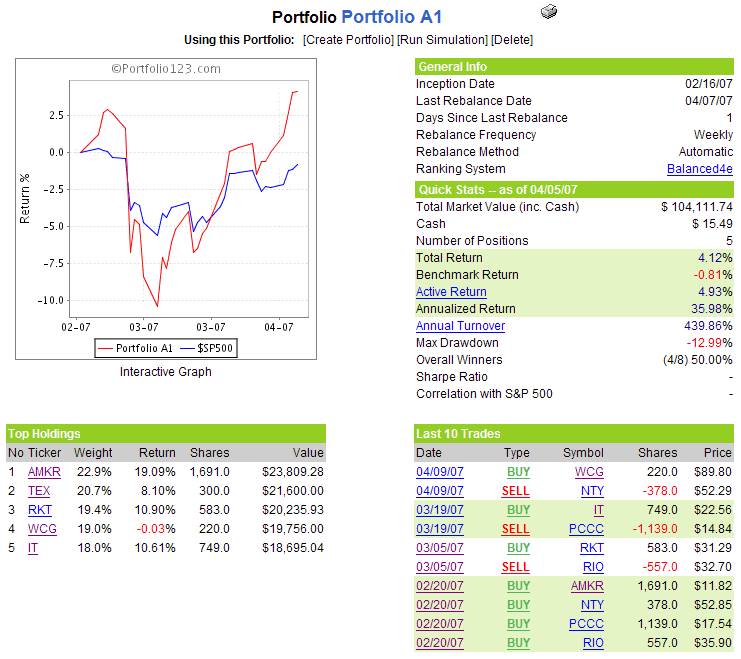Chart of the Week: A Month of New Sector Leadership
During the course of the past month or two, stocks have drifted sideways, lacking buying conviction and strong leadership.
In this week’s chart of the week below, I have tracked the performance of the nine AMEX sector SPDRs over the course of the past month. Note that former leaders financials (XLF) and energy (XLE) are now lagging, while defensive sectors such as utilities (XLU) and health care (XLV) are leading the way. Now I have nothing against utilities and health care, but the next time these two sectors lead a significant bull rally will be the first time in my memory. One or more of technology (XLK), consumer discretionary (XLY), materials (XLB) or perhaps financials needs to take a leadership role to give the next bullish leg the type of strength that portfolio managers can believe in.
A good defense may win championship, but it will not light a fire under potential buyers.
For more on related subjects, readers are encouraged to check out:
- Chart of the Week: Four Key Sectors Struggle
- Three Pivotal Sectors: Financials; Homebuilders; and Consumer Discretionary
- Sector Performance in the Last Two Bull Moves
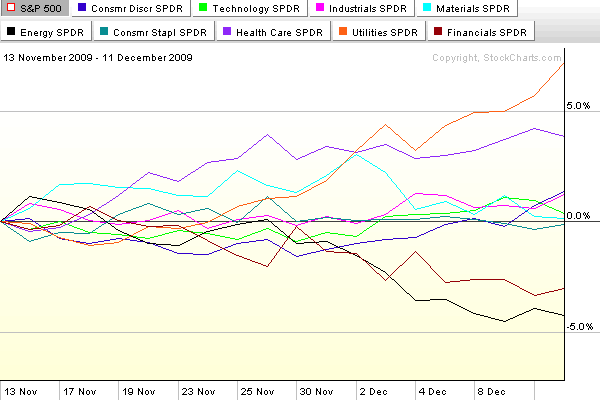
[source: StockCharts]
Disclosure: none
